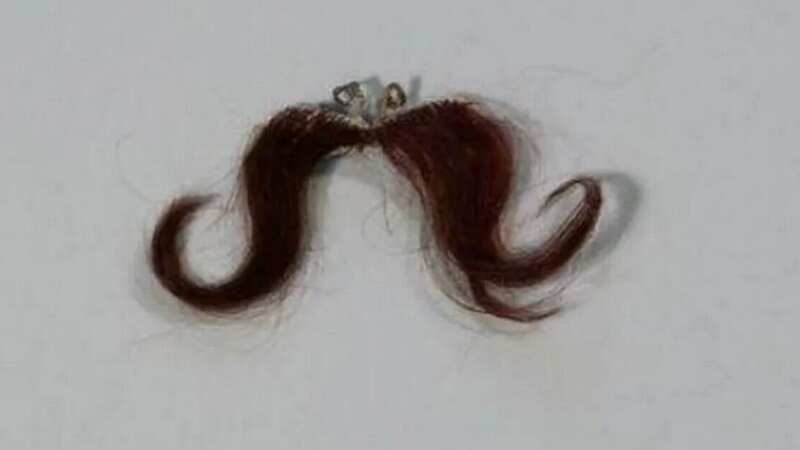Weirdest items missing from UK museums - from fake moustache to cannonball

What do a fake moustache, pair of underpants and a calendar bearing the likeness of Saddam Hussein have in common?
Sadly, it's not the first part of a terrible Christmas cracker joke, but just a snapshot of the hundreds of bizarre items to have disappeared from Britain's museums. Some 1,700 treasures and paintings have been classed as missing, a Freedom of Information request has revealed.
Among the vanished items are a cannonball from the Royal Greenwich Museum London, a reptile jaw fragment from the Natural History Museum and an 1869 drawing of Queen Victoria from the National Portrait Gallery. The latter revealed it had 45 items classed as "not found" between 2007 and 2022, although insists they are not missing or stolen.
They also included an engraving of King John signing the Magna Carta, a bronze sculpture of painter Thomas Stothard and a negative from the 1947 wedding of Queen Elizabeth. The gallery, which only re-opened last year following a three-year refurbishment and claimed many of the AWOL items listed - accounting for 0.02% of its collection - have simply not been found.
But for many of the other museums, hundreds of pieces remain at large. The data disclosed to PA news agency by the Department of Culture, Media and Sport (DCMS) provided a breakdown of the different items classed as missing, unfound or presumed stolen by each attraction.
 Sherlock Holmes Museum boss wins fight to evict brother from home in 10-year row
Sherlock Holmes Museum boss wins fight to evict brother from home in 10-year row
It comes after a British Museum employee was sacked last year when it was discovered more than 2,000 items were missing. Trustee chairman and former Chancellor George Osborne said records were “altered” by the sacked employee and suggested there was a lack of complete cataloguing at the museum.
 A cannonball (not pictured) is among the many items deemed missing from the Royal Museums Greenwich (V&A)
A cannonball (not pictured) is among the many items deemed missing from the Royal Museums Greenwich (V&A)The Victoria & Albert Museum disclosed that oil and watercolour paintings, a shadow puppet, false moustaches, various drawings, underpants, stockings and a mousetrap were among its more than 180 missing artefacts. No descriptions of the items or when they went missing were released through the FOI and the Kensington design institution said it was “standard practice to have a list of missing items as part of our regular auditing”.
Royal Museums Greenwich, which manages the National Maritime Museum, Queen’s House, the Royal Observatory, Greenwich and Cutty Sark in East London, disclosed that around 245 items cannot be found. A navigational aircraft computer, a gun-sighting telescope, a cannonball, charts, liquid compasses, an Act of Parliament, an Altazimuth circle, which can be used for holding telescopes, and ribbons and bands for caps were among the at large items.
The museum said these could be “ghost entries”, where some items had been incorrectly documented, adding audits had re-discovered 560 items. The Natural History Museum said a jaw fragment of a Late Triassic reptile, the Diphydontosaurus, was found to have been lost during a loan in 2019 and the next year more than 180 various fish, were recorded as lost and a crocodile tooth was discovered stolen in 2020.
The Science Museum Group - which includes Kensington's Science Museum and the National Railway Museum in York - also reported two model steam trains, a King George V and a British Railways Standard 4MT class, as stolen to police in 2014. They had not disclosed the thefts prior to the FOI and the items have not been recovered.
 Various model steam trains are gone from the Science Museum Group's collection (Getty Images/iStockphoto)
Various model steam trains are gone from the Science Museum Group's collection (Getty Images/iStockphoto)The museum also has recorded a 1960s model of a deep-sea observation chamber, a diver’s watertight torch, a resuscitating apparatus and a 19th-century portrait of Joseph Marie Jacquard as missing, with the group saying it had recently taken to barcoding items to protect them.
Ship camouflage drawings, British Army officer’s private papers, a calendar with a photograph of former Iraq leader Saddam Hussein and currency notes were among the 550 missing items at the Imperial War Museum. A museum spokesman said the artefacts “date from many years or even decades ago, long before our current collections management systems were put in place” and “are also typically low-value, mass-produced items”.
A DCMS spokesman said: “We are deeply committed to our world-class museums and the vital work they do to preserve their collections, whilst ensuring they are accessible to the public. The department is engaging with all sponsored museums and galleries to seek assurances on their security, collection and risk management arrangements, and are keen to ensure lessons are learned from any incident of theft or loss and shared with other national museums and the wider sector.”
Read more similar news:
Comments:
comments powered by Disqus































